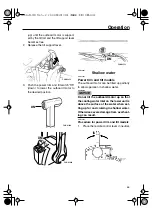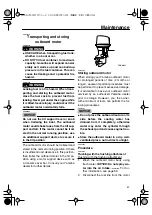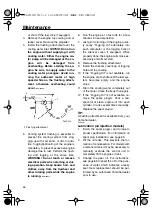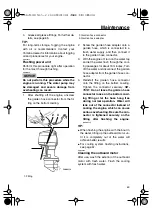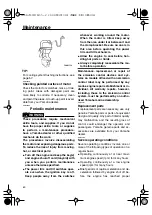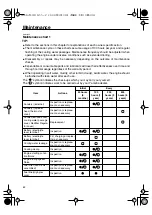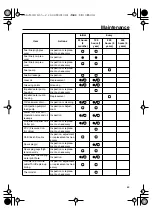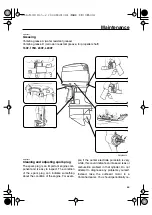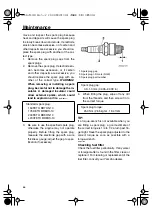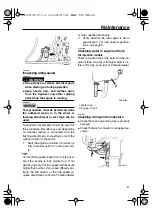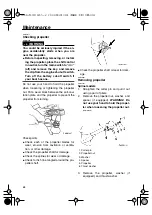
Maintenance
66
move and inspect the spark plug because
heat and deposits will cause the spark plug
to slowly break down and erode. If electrode
erosion becomes excessive, or if carbon and
other deposits are excessive, you should re-
place the spark plug with another of the cor-
rect type.
1.
Remove the spark plug caps from the
spark plugs.
2.
Remove the spark plug. If electrode ero-
sion becomes excessive, or if carbon
and other deposits are excessive, you
should replace the spark plug with an-
other of the correct type.
WARNING!
When removing or installing a spark
plug, be careful not to damage the in-
sulator. A damaged insulator could
allow external sparks, which could
lead to explosion or fire.
[EWM00561]
3.
Be sure to use the specified spark plug,
otherwise the engine may not operate
properly. Before fitting the spark plug,
measure the electrode gap with a wire
thickness gauge; adjust the gap to spec-
ification if necessary.
4.
When fitting the plug, wipe off any dirt
from the threads, and then screw it in to
the correct torque.
TIP:
If a torque-wrench is not available when you
are fitting a spark plug, a good estimate of
the correct torque is 1/4 to 1/2 a turn past fin-
ger-tight. Have the spark plug adjusted to the
correct torque as soon as possible with a
torque-wrench.
EMU37450
Checking fuel filter
Check the fuel filter periodically. If any water
or foreign matter is found in the filter, clean or
replace it. For cleaning or replacement of the
fuel filter, consult your Yamaha dealer.
Standard spark plug:
150FETO BR7HS-10
175DETO BR8HS-10
200FETO BR8HS-10
L200FETO BR8HS-10
1. Spark plug gap
2. Spark plug I.D. mark (NGK)
3. Spark plug part number
Spark plug gap:
0.9–1.0 mm (0.035–0.039 in)
Spark plug torque:
25.0 Nm (2.55 kgf-m, 18.4 ft-lb)




